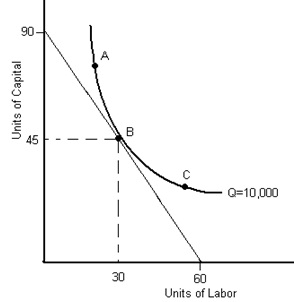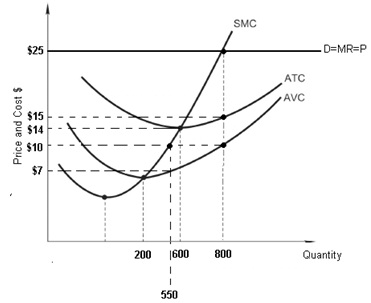Problem 1: With reference to the isocost curve and isoquant below, and the knowledge that labor costs $150 per unit, answer the following questions:
a. What is the price of capital?
b. What is the equation of the isocost curve?
c. What is the slope of the isocost curve?
d. If the marginal product of capital is 50 at the optimal combination of labor and capital (Point B), then what is the marginal product of labor and why? (Hint: Use mathematical conditions for optimal combination).
e. At Point A, which is greater, MPL/w or the MPK/r?
f. At Point C, the same output can be produced more cheaply by substituting _________ for __________.

Problem 2: You’re the production manager of a price-taking firm. Market price is currently $25 and the chart below depicts your marginal revenue, marginal cost, average total cost and average variable cost curves.

a. Should you produce or shut down when price is $25? Why?
b. What is your profit maximizing output?
c. What is your total revenue at the optimal output?
d. What is your total fixed cost?
e. What is your total variable cost at the optimal output?
f. What is your total profit at the optimal output?
g. Demonstrate how the output associated with the maximum profit rate is not the profit maximizing output
h. Assume the market price falls to $10. Should you produce or shut down at $10? Why?
i. If you produce, how much should you produce?
j. If you produce, what is your total profit?